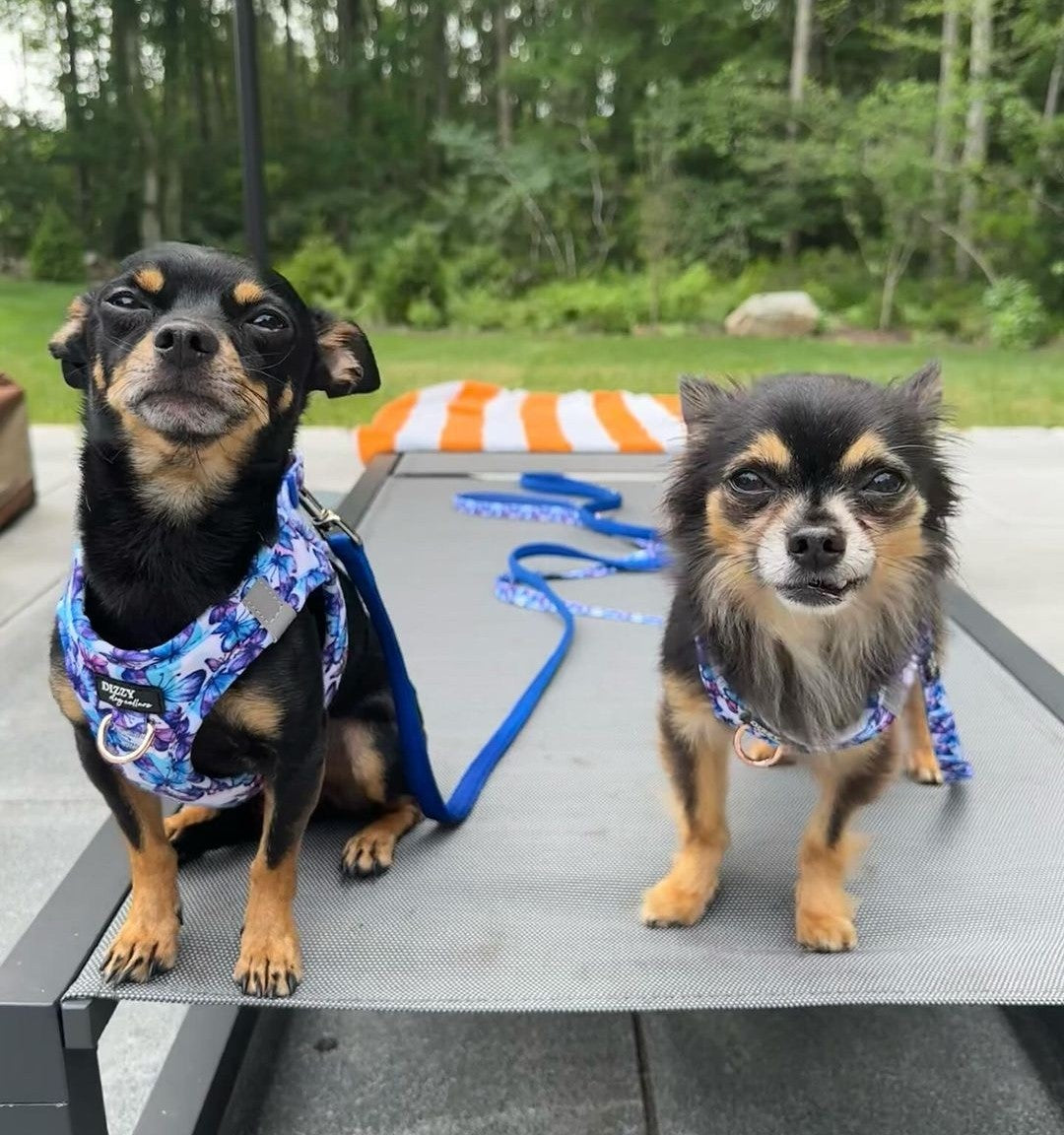Inspired by the recent breed reveal of our Instagram buddys' Joey and Chandler @joeyandchandlertakemanhattan, we’re diving into the fascinating world of dogs that share a striking resemblance to their wild ancestors, wolves. As these adorable rescue pups continue to charm their followers, it’s a perfect opportunity to explore the breeds that echo the wolf’s majestic lineage. While all domestic dogs (Canis lupus familiaris) are descendants of wolves (Canis lupus), some breeds exhibit traits and characteristics that bring them closer to their wild roots. In this blog, we’ll uncover the top six dog breeds that resemble wolves, delving into their history and unique attributes. Along the way, we’ll also highlight the importance of rescue dogs like Joey and Chandler, who embody the spirit of companionship and loyalty.
A Brief History of Dog Domestication
The domestication of dogs is a fascinating journey that began over 15,000 years ago. Early humans likely began to domesticate wolves, who scavenged near human settlements. Over generations, a mutual bond formed: humans provided food, while the wolves offered protection and companionship. Genetic studies suggest that dogs split from their wolf ancestors around 20,000 to 40,000 years ago, with selective breeding for specific traits leading to the diverse breeds we see today (Freedman et al., 2014).
The Six Breeds Closest to Wolves
1. Alaskan Malamute
Description:The Alaskan Malamute is a large, powerful breed known for its endurance and strength. With a thick double coat, erect ears, and a bushy tail, these dogs closely resemble their wolf ancestors.
History: Originally bred by the Mahlemut tribe of Alaska for hauling heavy sleds and as hunting partners, Malamutes are one of the oldest Arctic dog breeds. Their resemblance to wolves is more than just physical; they have strong pack instincts and a loyal temperament.
Notable Traits: High energy, affectionate, and intelligent, Malamutes thrive in active households and need ample exercise.

2. Siberian Husky
Description: Huskies are medium-sized working dogs with striking blue or multi-colored eyes, a thick coat, and a wolf-like appearance.
History Bred by the Chukchi people of Siberia, these dogs were used for sledding and companionship. Their history as pack animals makes them highly social and energetic.
Notable Traits: Huskies are known for their friendly disposition and strong prey drive, often requiring training to manage their wolf-like instincts.

3. Czechoslovakian Wolfdog
Description: This breed is a direct cross between German Shepherds and Carpathian wolves. The Czechoslovakian Wolfdog has a striking wolf-like appearance, with a thick coat, erect ears, and a keen expression.
History: Developed in the late 1950s for military and working purposes, these dogs are highly intelligent and versatile.
Notable Traits: They are known for their loyalty, but they require experienced handlers due to their strong prey drive and independent nature.

4. Tamaskan Dog
Description: The Tamaskan Dog was bred to resemble wolves while maintaining the temperament of a domestic dog. With a strong build and a thick coat, they are visually impressive.
History: Developed in Finland in the 2000s, Tamaskans are a mix of several breeds, including Alaskan Malamutes, Siberian Huskies, and German Shepherds. Their breeding aimed to create a wolf-like appearance without the challenging temperament of a wolf.
Notable: Traits: Tamaskans are known for being friendly, intelligent, and good with families, making them excellent companions.

5. Shikoku
Description: The Shikoku is a medium-sized breed from Japan, closely resembling a wolf due to its erect ears and dense coat.
History: Originally bred for hunting boar, the Shikoku has ancient roots in Japan. Their history is steeped in folklore and tradition, making them a cherished breed.
Notable Traits: They are known for their agility, loyalty, and strong instincts, requiring a firm hand in training.

6. Pekingese
Description: While not physically resembling wolves as much as others on this list, the Pekingese shares a long history with royalty and serves as a companion dog. Their unique appearance features a flat face and long coat. Pekingese are among the least changed breeds of dogs from wolves at a DNA level.
History: This breed was revered in ancient China, where they were kept as companions for emperors and nobility. Although they diverged from their wolf ancestors in appearance, their lineage is part of the broader dog family tree.
Notable Traits: Pekingese are known for their confident demeanor and loyalty to their families, making them loving companions.
The Role of Rescue Dogs: Joey and Chandler
In our exploration of dog breeds and their rich history, it’s essential to highlight the significant role that rescue dogs play in our lives. Friends Joey and Chandler (@joeyandchandlertakemanhattan) embody this spirit beautifully. These two rescue pups have captured the hearts of many with their adorable antics and the message of adopting rather than shopping for pets. Have they descended from the call of the wolf? Head over to their Instagram feed to find out their breed reveal story!
Adopting rescue dogs not only provides a loving home for animals in need but also brings unique and often wolf-like traits to our households. Many rescues, regardless of their breed, possess the loyalty and companionship reminiscent of their wild ancestors. Joey and Chandler remind us that every dog has a story and deserves a chance at a happy life. Be sure to check out their instagram feed to see if they have come from the call of the wolf!
Conclusion
Dogs, with their diverse breeds and rich histories, continue to evolve alongside us. While some breeds closely resemble their wolf ancestors, they also possess the temperament and traits that make them cherished family members. Whether you’re considering an Alaskan Malamute, a Siberian Husky, or even a Pekingese, it’s vital to understand their backgrounds and needs.
As we appreciate the beauty of these breeds, let’s also remember the importance of adopting rescue dogs. Just like Joey and Chandler, every dog has the potential to bring joy and love into our lives. Together, we can honor the legacy of dogs and their connection to wolves, fostering a world where all dogs are valued and loved.
References
- Freedman, A. H., et al. (2014). “Genomic data reveal the origin of dog breeds.” "Nature"
- "History of the Alaskan Malamute." American Malamute Association.
- "Czechoslovakian Wolfdog History." Czechoslovakian Wolfdog Club of America.
- “The Tamaskan Dog.” Tamaskan Dog Register.

